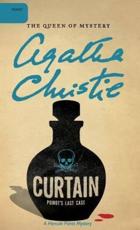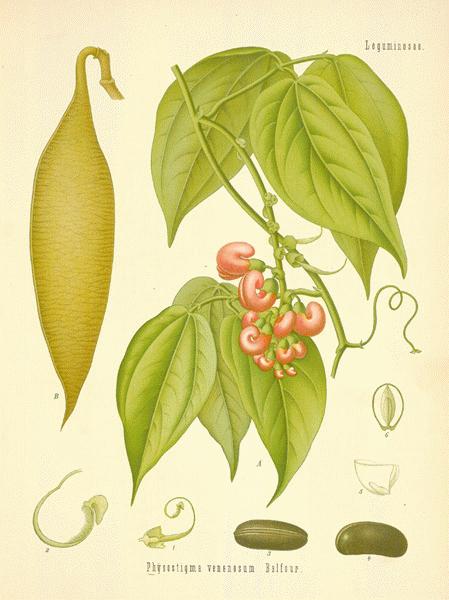
Poirot Score: 87
Curtain
✰✰✰✰✰
Explanation of the Poirot Score:
This is Christie at her sparkling best.
Surprised that Christie can suddenly write a cracker of a book in her 80s?
It was written three decades earlier when she was in her prime.
During the blitzkrieg in London in the Second World War in the 1940’s, Agatha Christie realised she might be killed. Her house in Sheffield Terrace, Kensington had narrowly escaped the bomb that flattened the rest of the street in October 1940. Laura Thompson in her Christie biography asserts that Christie decided to write a final Curtain for Poirot, looking back at his twenty year career. Christie sent the manuscript out of London, for safe keeping. Christie, Mallowan (her second husband), and Christie’s daughter, Rosalind all survived the war, although sadly Rosalind’s husband did not; he was an RAF Pilot and was shot down in 1944.
From more recent evidence in Christie’s ‘Secret Notebooks’, John Curran meticulously documents the seeds of the plot for Curtain are in nine separate note books. The exact date Christie wrote Curtain is unknown, as the manuscript and the pages in her rough books are undated.
The novel remained in a bank vault for over 30 years. Christie allowed Curtain to be published in 1975; she died four months later, in January 1976. Understanding that Curtain was written in the 1940s, explains its anachronistic flavour. She usually set her novels in ‘real time’. Christie could not know that hanging would be abolished for murder in Great Britain in1965, twenty years after this book was finished.
Curtain is clearly clued and intricate. Tinged with the sadness of the physical decline in the greatest of all detectives, Poirot plans to end with a bang, not a whimper.
This is Christie’s final adieu to Poirot, and herself.
For the review click here (plot spoilers ahead)
Trivia
Poirot’s Obituary in New York Times August 6, 1975
Hercule Poirot Is Dead: Famed Belgian Detective
Hercule Poirot, a Belgian detective who became internationally famous, has died in England. His age was unknown.
from New York Times
Only two fictitious characters have ever had an obituary in The New York Times, Sherlock Holmes, and Hercule Poirot.
The Mystery of the Yellow Room
Gaston Leroux’s Mystery of the Yellow Room caused a sensation when it came out in 1908. It is a ‘locked room’ puzzle. Christie was challenged to write a murder mystery by her older sister, Madge, after they had both read Leroux. Leroux also wrote Phantom of the Opera. Christie wrote her first Poirot whodunnit, The Mysterious Affair at Styles as the result of Madge’s encouragement.
In Curtain, Christie not only returns Poirot and Hastings to Styles to end their careers, but also creates the most perfect of locked room mysteries, to bring the wheel of life and fortune full circle.
Physostigmine and the Calabar bean

In the gaps, or synapses, between nerve cells special chemical messengers, neurotransmitters, are released by one cell, to stimulate the next cell across the gap. Think of these chemicals like little trained pigeons flying with notes across a sky from one tree to the next. These chemicals then need to be removed by enzymes, that destroy the messenger chemical, like sparrow hawks eating the pigeons, or wiping chalk off a blackboard to make a kinder visual picture, in order to be ready for the next message. So anything that stops the process of either making or releasing the neurotransmitter, or blocking it being able to give its message at the other synapse is an extremely effective way to kill people. It paralyses the muscles that to allow you to breathe. These principals are used all the time in anaesthetics, to literally block the nerves. Neurological blocking agents have been used to lethal effect to kill insects, and on human beings in chemical warfare or by Russian assassins.
One common neurotransmitter is acetylcholinesterase. Physostigmine stops the enzyme that chomps up the acetylcholinesterase, so is a reversible cholinesterase inhibitor. Physostigmine can be extracted exactly as Christie describes from the West African Calabar bean.
Physostigmine was first made in 1935 by Josef Pikl and Percy Lavon Julian, less than a decade before this book was written. Agatha Christie worked as a hospital pharmacy dispenser during the First and Second World Wars, so was impressively up to date with cutting-edge pharmacology. Physostigmine is used to treat a number of conditions including glaucoma, by reducing high eye pressure.
The pounded calabar beans are left to infuse, and the infusion drunk. It is supposed to be fatal within an hour. It was used, as the book describes, in West Africa as a ‘truth’ test: after drinking the infusion if you were innocent, you survived, if guilty you died. Rather remniscient of the Norman tests for witches, but drinking calabar bean infusions have a slightly higher chance of survival, since there are apparently some beans that look the same, but are not poisonous. As a witch in Norman times, it was rather a loose:loose scenario. You were thrown, bound, into deep water. If you sank and drowned, you were innocent, if guilty you floated: and were then put to death.
It might be Christie’s sense of Justice that the guilty Mrs. Franklin was killed, and the innocent Dr. Franklin escapes the death his wife had planned for him. Or it could just be that Christie longs for a happy ending to this novel, like all good comedies, with marriage.
Jordanitis
Curtain is accurate about the West African Calabar bean and its properties, but the disease ‘Jordanitis’ is fictictious. I wondered if it was Burkett’s Lymphoma, which affects mainly children in endemic malaria areas of central Africa, and is closely linked to infection with Epstein-Barr virus. Burkett’s lymphoma can give terrible tumours of the jaw.
What are ‘cretonnes’?
Barbara Franklin happily advised her childhood sweetheart, Sir William Boyd Carrington on the lavish refurbishment of his Country House. They talk of ‘cretonnes’, which are not dried, toasted bits of bread found floating in some French Soups, as I thought.
Cretonnes are a term used for stiff printed Curtain fabrics. Presumably Christie decided not to use the word ‘curtain’ here to both show the exotic, extravagant nature of Sir William’s interior designs, and to avoid confusion with the title of the book.
Shakespeare in this book:
The basis of this plot is from the character of Iago, in the play Othello. Poirot says Iago might have been the perfect murderer. In Shakespeare’s play, Othello’s jealousy of his wife, Desdemona, his unfounded fears that she is unfaithful to him, are planted and orchestrated by his faithful friend, the ‘honest’ Iago.
Iago is out for revenge. Iago hints at suspicions to Othello, and engineers various scenes, which Othello takes as incontrovertible proof of Desdemona’s guilt. Iago always seems to be the calm, supportive friend, whilst being the scheming villain, goading Othello to murder, underneath the mild, smiling exterior.
Agatha Christie saw the 1942 July-August production of Othello (New Theatre) directed by Julius Gellner. Christie also saw Robert Helpmann’s Hamlet. There are also two mentions of Hamlet.
Poirot says ‘I was like Hamlet – eternally putting off the evil day…’. In the same chapter there is also a description of Norton’s technique:
‘See now the different stops on which Norton plays’. This is a nod to Act 3, Scene 2, where Guildenstern has been asked by the King to find out what is wrong with Hamlet. Hamlet knows this and asks him to play a pipe, which Guildenstern refuses to do, saying he does not know how to. Hamlet replies:
‘It is as easy as lying. Govern these ventages with your fingers and thumb, give it breath with your mouth, and it will discourse most eloquent music. Look you, these are the stops’.
GUILDENSTERN:
‘But these cannot I command to any utterance of harmony. I have not the skill’.
HAMLET
‘Why, look you now, how unworthy a thing you make of me! You would play upon me. You would seem to know my stops. You would pluck out the heart of my mystery. You would sound me from my lowest note to the top of my compass. And there is much music, excellent voice, in this little organ, yet cannot you make it speak? ‘S’blood, do you think I am easier to be played on than a pipe? Call me what instrument you will, though you can fret me, yet you cannot play upon me.’
Norton also knows his Shakespeare. He uses the quote from Julius Caesar ‘Not in our stars, dear Brutus – but in ourselves.’ He is trying to galvanise Colonel Luttrell into action, and determination has to come from within, implying the poor Colonel would not be henpecked by his wife if he asserted himself.
Tennyson’s Maud
‘And Echo whate’er is asked her answers Death’ comes from the first stanza of a very long, early narrative poem of Alfred, Lord Tennyson: ‘Maud’. As in ‘Come into the garden, Maud, for the black-bat, night, has flown’: which was the only line I knew.
I hate the dreadful hollow behind the little wood,
Its lips in the field above are dabbled with blood-red heath,
The red-ribb’d ledges drip with a silent horror of blood,
And Echo there, whatever is ask’d her, answers ‘Death.’
Slumberyl barbiturates:
Allerton unpleasantly remarks to Hastings that the toxic dose is very near the effective dose; meaning one could easily, accidentally take a fatal overdose. This is true of all barbiturates, which is why they are no longer prescribed for the general public as sleeping tablets. The ‘trade name’, Slumberyl, is fictitious. Barbituric acid acid was first made in 1864 by Adolf von Baeyer. It was marketed under the name Veronal as a sleeping tablet. Barbiturates still have a number of medically-supervised uses, as short acting anaesthetics and as anti-epileptics.
‘Don’t start making a Mr Barrett of yourself’
Judith Hastings means her father is being over protective.
Elizabeth Barrett [b 1806] was a poet,who had tuberculosis, who mainly lived in an upstairs room at her father’s house at 50, Wimpole Street with her dog, Flush. Her published works led the poet Robert Browning to write to her, and they fell in love. Browning was six years younger and penniless. Elizabeth’s father, Mr Barrett, and her brother thought he was only after her money. The family’s wealth was from Jamaican slave-labour sugar plantations. Elizabeth was an Abolitionist. Robert and Elizabeth eventually married in secret and fled to a happy life together in Italy, when Elizabeth was 40 yrs old. Mr Barrett disinherited his daughter.

Agatha Christie married her second husband, Max Mallowan, when she was nearly 40, and Max was 26 years old. Christie’s family also thought this young man was only after her money, and had warned her accordingly, which hurt her greatly, just like the Barrett family eighty years earlier.
It is interesting to note that Mr Barrett as a phrase appears in both Sleeping Murder and Curtain: the farewell books of Marple and Poirot.
Wimpole Street has many other literary connections.
Paul McCartney stayed at 57 Wimpole Street, when he wrote ‘Yesterday’. In Jane Austen’s Mansfield Park (1814) Mr Rushworth takes a house in Wimpole Street. Professor Henry Higgins lives at 27 A Wimpole Street in George Bernard Shaw’s play Pygmalion. Dr Arthur Conan Doyle set up his practice in Upper Wimpole Street, starting to write his Sherlock Holmes stories there.

